With Super Bowl 55 in the books, it is now officially the offseason — a time for optimism for all 32 NFL franchises. The 2021 NFL Draft and free agency — and all the new faces that come with those processes — are the big sellers of hope, but fanbases also get a chance to wonder what their teams' returning players can accomplish with another year under their belts.
Based on 2020 production compared to previous seasons, these are the players who took the biggest steps forward this past season for each of the 32 NFL teams.
ARZ | ATL | BLT | BUF | CAR | CIN | CHI | CLE | DEN | DAL | DET | GB | HOU | IND | JAX | KC | LVR | LAC | LAR | MIA | MIN | NE | NO | NYG | NYJ | PHI | PIT | SF | SEA | TB | TEN | WFT
Arizona Cardinals: EDGE Haason Reddick
Reddick had 57 career pressures coming into this season, and he nearly matched that total with 56 pressures in 2020 alone — 13th among all edge defenders. In fact, Reddick’s 26 pressures over the final four weeks of the 2020 campaign would be more than he had in any entire season prior to this past year. Arizona could not have hoped for much more out of the fourth-year player in his first full NFL season as an edge defender after he earned PFF grades of just 54.0, 60.4 and 40.2 in his first three campaigns.
It’s an interesting time for Reddick to hit free agency given his career year and his move away from a hybrid role.
Atlanta Falcons: WR Calvin Ridley
Unlike many players in this piece, Ridley was already an established, productive player coming into the 2020 season. It wasn’t until this past year that he made the jump to elite status, though.
Part of that rise was due to increased opportunity, as Julio Jones started just nine of 16 games this year, but Ridley took full advantage. His 1,374 receiving yards were over 500 more than he recorded in either of his first two seasons, and he picked up those yards in big chunks. He racked up 40 receptions of 15 or more yards — more than any other receiver in the NFL. With a healthy Julio, the Falcons have two legitimate No. 1 options in the passing game.
Baltimore Ravens: S DeShon Elliott
The Ravens were the most difficult team in the league to find a most improved player for. Nearly every player on Baltimore's roster took a step back from a tremendous 2019 season that saw the team earn the AFC's top seed with a 14-2 record.
Elliott gets the nod not because his quality of play significantly improved — his PFF grade actually fell slightly from 69.7 in 2019 to 69.6 this past season — but because he delivered a solid performance in a full-time starting role after playing just 40 defensive snaps across his first two seasons in the NFL.
The Earl Thomas saga opened up a starting job at free safety, and Elliott claimed it, playing over 1,000 snaps over the course of the year. There are certainly worse outcomes than finishing the year ranked 27th out of 93 qualifying safeties in overall grade.
Buffalo Bills: QB Josh Allen
Allen posted a 65.3 PFF grade across the first two seasons of his NFL career. It’s exceedingly rare a player with that profile develops into a top-10 quarterback, but that is exactly what Allen did this past season.
The third-year signal-caller went from one of the least accurate passers in the league to a quarterback who rarely missed his target. Allen threw an uncatchable pass on 26% of his passes across his first two seasons — the worst mark in the league — but improved that mark to 16% during the 2020 regular season (fifth-best in the NFL). With all the physical tools in place and improved accuracy, the arrow is pointing up for Buffalo’s franchise cornerstone.
Carolina Panthers: EDGE Brian Burns
There was every reason coming into this season to expect Burns to take a big step in his development. He earned a top-10 pass-rushing grade at the position last season as a rookie before injuries began to derail his campaign.
This season, Burns began to establish himself as one of the NFL's premier speed rushers off the edge, flashing a nasty spin move to counter inside. He finished the year with 57 pressures and an 86.9 pass-rushing grade — fifth among all edge defenders in the league, behind only Khalil Mack, T.J. Watt, Joey Bosa and Myles Garrett. Burns is a key part of a young Carolina defense that should only continue to improve.
Chicago Bears: RB David Montgomery
Montgomery’s specialty coming out of Iowa State was making defenders miss, and while he did that as a rookie, it wasn’t exactly leading to big plays on the ground. His 2.3 rushing yards after contact per attempt in 2019 ranked tied for worst among 45 running backs with at least 100 carries. That number jumped nearly a full yard to 3.1 yards after contact per attempt for Montgomery in 2020. It was a big reason for his PFF rushing grade improving from 65.3 to 82.3.
Chicago still has a lot of questions to answer on offense, but based on Montgomery's performance last season, he looks like someone they can rely upon at the running back position.
Cincinnati Bengals: S Jessie Bates III
Bates should have gotten more national recognition — through both the Pro Bowl roster and All-Pro team — than he did. He took a step back in 2019 with a 61.2 PFF grade after a promising rookie campaign, but he made the jump all the way to elite in 2020 with a position-high 90.1 grade.
Bates showcased that there are few players in the league who can compete with his range and instincts at the free safety position. His 15 combined pass breakups and interceptions this season were more than any other safety in the league despite him playing a deeper role where he didn't see nearly as many passes come his way compared to someone who plays more in the slot and box.
Cleveland Browns: RG Wyatt Teller
Teller earned overall PFF grades of 60.3 as a rookie with Buffalo in 2018 and 56.7 with the Browns in 2019. All he did in his third season was finish the year as the highest-graded guard in the NFL. In particular, he was dominant in the run game, where his 93.6 run-blocking grade was the highest mark PFF has given out since 2013. Browns’ offensive line coach Bill Callahan deserves some serious credit for the work he did with Teller and the rest of that offensive line this season.
Dallas Cowboys: EDGE Randy Gregory
Gregory’s career has been knocked off the rails by suspensions since the Cowboys selected him in the second round of the 2015 NFL Draft out of Nebraska. He played fewer than 1,000 snaps on defense across five seasons prior to this past year — missing the entirety of the 2017 and 2019 campaigns — and never graded above the 61.8 mark he produced as a rookie.
While he played just 270 snaps this past season, Gregory did show marked signs of improvement as both a run defender and a pass rusher. His 79.4 run-defense grade and 81.9 pass-rushing grade were both comfortably career-highs, as was his 17.1% pass-rush win rate. The next step for Gregory in 2021 is to deliver a similar performance over the course of a full season.
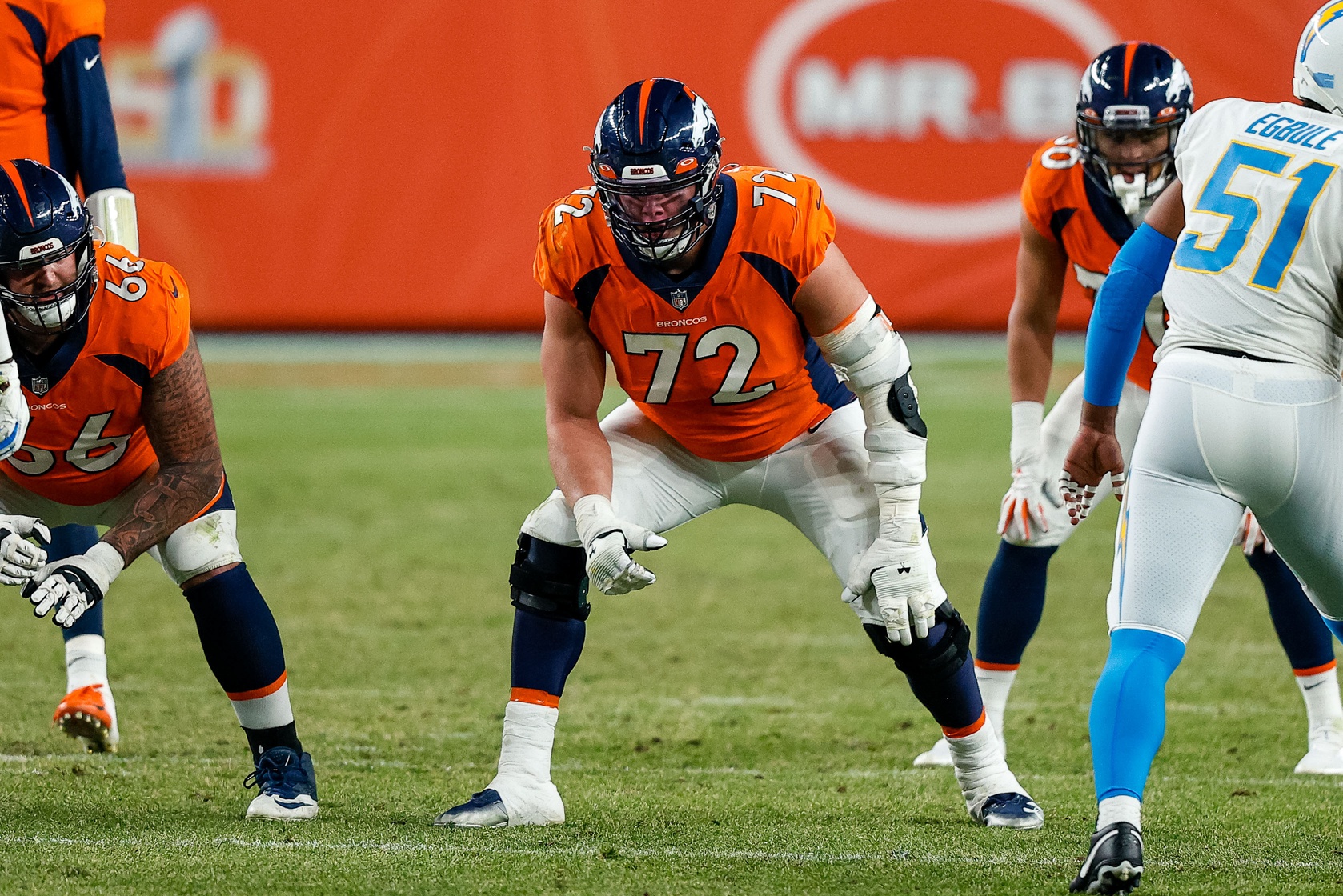
Denver Broncos: LT Garett Bolles
I called Bolles underrated entering the 2020 season, but even that was more in the sense that he was closer to a middle-of-the-pack left tackle rather than one of the worst starters in the NFL. His 2020 play should certainly take him out of that conversation.
Bolles was a below-average pass protector from 2017 to 2019, but his 87.9 pass-blocking grade in 2020 ranked fourth at the tackle position. He allowed just 13 pressures all year — 18 fewer than his count in 2019 with 10 fewer penalties, to boot. That improvement earned Bolles a nice payday in the form of a four-year, $68 million deal with Denver.
Detroit Lions: EDGE Romeo Okwara
Perhaps the drafting of his younger brother, Julian Okwara, sparked something in Romeo, because his pass-rushing performance in 2020 was leaps and bounds ahead of anything he was able to do in the first four years of his career with both New York and Detroit.
Okwara finished the season with 61 quarterback pressures (tied for ninth-most in the NFL) after never clearing 40 in any previous campaign. In a similar vein, his pass-rushing grade of 85.4 was a top-10 mark at the position. Okwara’s previous career high was just 58.3 in 2019. It’s always risky trying to evaluate a pass rusher entering free agency on an outlier season like the one Okwara just had, and that’s exactly the task the new front office and coaching staff is left with this offseason.
Green Bay Packers: TE Robert Tonyan
Coming into the 2020 season, Tonyan had 14 career catches for 177 yards and two touchdowns in three seasons after entering the league as an undrafted free agent out of Indiana State in 2017. Yet he racked up 52 receptions for 586 yards and 11 touchdowns in the 2020 season alone.
He was one of Aaron Rodgers’ most efficient targets in what was a remarkable year for the quarterback. Tonyan caught an impressive 89.7% of the passes thrown his way — dropping none of his catchable targets — and earned a passer rating of 148.3 when targeted. Few would have expected Tonyan to serve as the de facto No. 2 option in the passing game behind Davante Adams, but he was a quality second option all year in one of the most efficient offenses in the league.
Houston Texans: S Lonnie Johnson Jr.
If Johnson wouldn't have shown signs of improvement in his second season out of Kentucky, his career would be in need of some life support. As a rookie in 2019, Johnson earned just a 31.7 coverage grade, allowing seven touchdowns into his coverage and picking up nine penalties on the season.
Those struggles came primarily at outside cornerback, but Johnson made the move to safety this past season. The switch brought significantly better results. His overall grade improved nearly 30 points from 36.0 to 65.5, and Johnson was called for just one penalty on the year in over 700 defensive snaps.
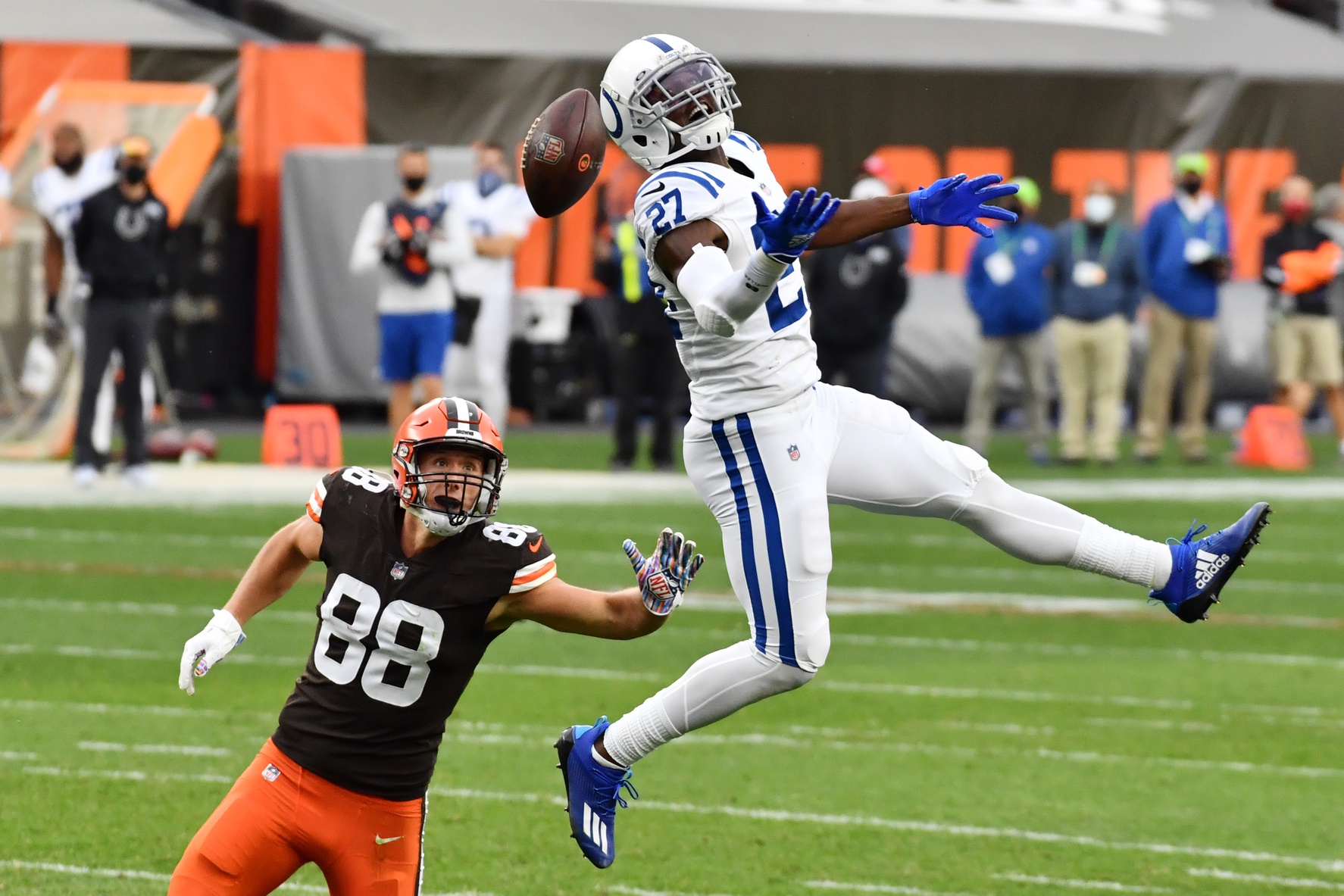
Indianapolis Colts: CB Xavier Rhodes
The Colts’ decision to bring in Rhodes on a one-year, $3 million deal was just about as low risk as decisions come. Rhodes was coming off two straight down seasons in Minnesota, allowing an absurd 84.3% of the passes into his coverage to be completed in the previous year. However, in his first season in Indianapolis, Rhodes allowed just 50.7% of the passes thrown his way to be caught — improving his PFF grade from 46.4 to 76.3 in the process.
I wrote this past offseason that the Colts defense was the right environment for Rhodes to revive his career, and that’s exactly what the veteran cornerback did. Indianapolis would probably love to bring him back for another year as long as the price stays reasonable.
Jacksonville Jaguars: RG A.J. Cann
Cann has had an interesting career arc. He began his career with respectable 69.5 and 72.6 PFF grades in 2015 and 2016, respectively, before falling to 61.7, 62.7 and 55.3 across the last three seasons. The main cause of that decline was in pass protection where his 6.8% pressure rate allowed in the 2018 and 2019 seasons ranked 64th among 72 guards to record at least 500 pass-blocking snaps.
That took a step forward in 2020. Cann’s 3.5% pressure rate allowed this past season ranked 14th at the position — tied with Joe Thuney — among 72 qualifying guards. That improvement led to Cann’s highest pass-blocking grade since 2016.
Kansas City Chiefs: CB Bashaud Breeland
Breeland’s 2019 season with Kansas City was interesting in that his coverage stats did not come close to matching his PFF coverage grade. He allowed just 47.5% of the passes thrown into his coverage to be completed, and quarterbacks recorded a passer rating of 77.4 on throws into his coverage. Yet Breeland earned just a 43.9 coverage grade during the regular season in 2019. The reason: He was one of the most heavily penalized cornerbacks in the league (12) and also benefited from dropped passes or errant throws his way.
While the coverage stats took a step back in 2020, Breeland graded significantly better with a 72.9 coverage grade in the regular season. He made more plays on the football and isn’t giving up as many big plays with over five fewer yards allowed per reception.
Las Vegas Raiders: WR Nelson Agholor
First-round rookie Henry Ruggs was supposed to be the receiver that struck fear in opposing defenses downfield this year for Las Vegas, but that ended up being Agholor’s role in the offense.
In 2019 with Philadelphia, Agholor averaged just 9.3 yards per reception and caught three of his 15 targets on passes 20 or more yards downfield. With the Raiders in 2020, Agholor averaged over 18 yards per reception and caught twice as many touchdowns on passes 20-plus yards downfield (six) as he had total receptions the prior year. As a result, the Raiders are going to have a tough time re-signing him to another one-year, $1 million deal this offseason.
Los Angeles Chargers: DI Justin Jones
Jones has steadily improved in each of his first three seasons out of North Carolina State, raising his PFF grade from 47.7 as a rookie in 2018 to 59.1 last season to 70.6 in 2020.
The third-year man still wasn’t giving Los Angeles much as a pass rusher, but he was significantly better in run defense and stood out as a sure tackler. Jones’ 79.2 run-defense grade ranked 10th among all qualifying interior defenders this past season, and he didn’t miss a tackle on 33 opportunities. That performance should ensure a role in new head coach Brandon Staley’s defense in 2021.
Los Angeles Rams: RT Rob Havenstein
Havenstein’s improvement in 2020 was more of a rebound than anything else. In 2018, his 83.3 PFF grade ranked second among all right tackles behind only Mitchell Schwartz, but that fell to 50.9 through nine games in 2019 before he was shut down due to a meniscus injury.
Havenstein took a big step back in the right direction this past year, both as a run-blocker and pass-protector. His 80.5 PFF grade in 2020 ranked fifth among qualifying right tackles, and he fell behind only Mike McGlinchey when it came to run-blocking grade at the position (83.9). The Rams need him at that level again in 2021 as they go all-in around new quarterback Matthew Stafford.
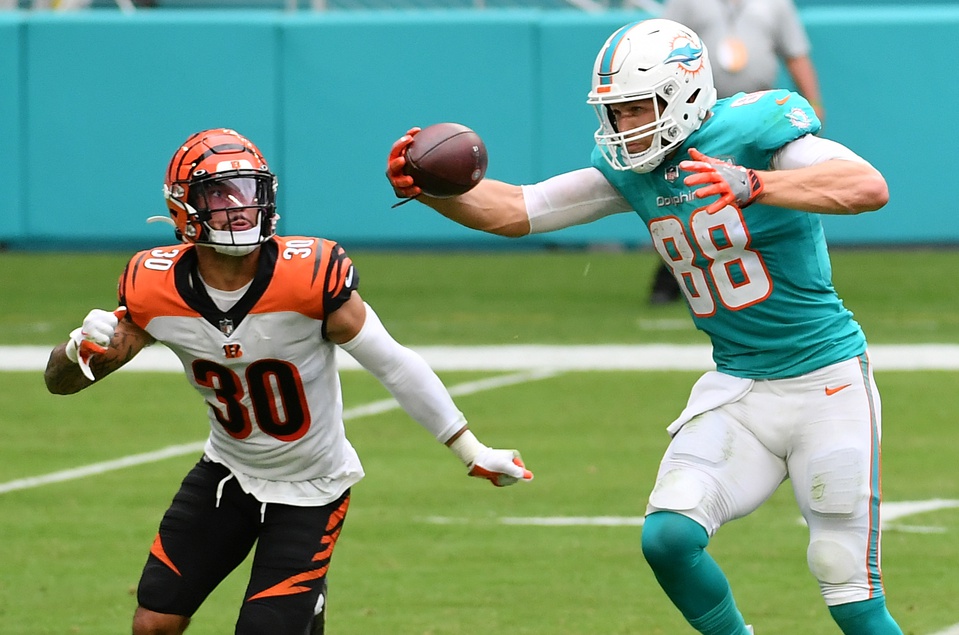
Miami Dolphins: TE Mike Gesicki
At 6-foot-6 and 245 pounds, Gesicki has always had the athletic profile to be one of the NFL's more dominant receiving threats at the tight end position, but he wasn’t quite there in his first two seasons in the league. The 2020 campaign brought him closer to that tier.
Gesicki improved his receiving grade from 58.4 across the 2018 and 2019 seasons to 79.4 this past year, fifth among tight ends who ran at least 150 routes behind only Travis Kelce, Darren Waller, George Kittle and Noah Fant. His ability to bring down 50-50 balls in 2020 was a big reason for that jump, as Waller was the only tight end to haul in more contested catches (19) than Gesicki (17) in 2020.
Minnesota Vikings: RB Dalvin Cook
Cook was widely considered to be one of the most talented running backs in the NFL coming into the season, but after a career year in 2020, he will now be one of the few running backs in contention for being the best in the entire NFL.
Cook’s 90.2 rushing grade in 2020 was over 10 points higher than any previous season in his career, ranking behind only Derrick Henry among running backs this past season. His 1,039 rushing yards after contact and 68 broken tackles on the ground also finished second at the position behind only Henry. As always with Cook, health will be key in 2021 because he’s one of the best runners in the league when he's on the field.
New England Patriots: WR Jakobi Meyers
As an undrafted rookie free agent out of North Carolina State, Meyers was given a brief opportunity on a depleted Patriots’ receiving corps in 2019. He played relatively well in that limited role, but Meyers showed definite signs of improvement in his second season with the team, serving as a bright spot on an offense that had few of those to speak of.
Meyers improved his PFF grade from 64.7 to 78.6 and led all Patriots in both receptions (59) and receiving yards (729) on an offense that leaned heavily on the running game with Cam Newton at quarterback. He has a definite role on the offense heading into 2021.
New Orleans Saints: DI David Onyemata
Onyemata is another player whose improvement was more of a rebound. He showed the profile of a steadily improving young player across his first three years in the league — peaking with a 79.7 PFF grade in 2018 — but Onyemata took a major step back in 2019, earning an overall grade of just 55.3.
Not only did Onyemata get back to his 2018 level of play this past season, but he far exceeded it. His 88.8 PFF grade in 2020 ranked seventh among all qualifying interior defenders, and his 17.3% pass-rush win rate was a top-five mark at the position. The three-year, $26 million contract he signed last offseason with the Saints looks like a steal if he maintains that standard of performance.
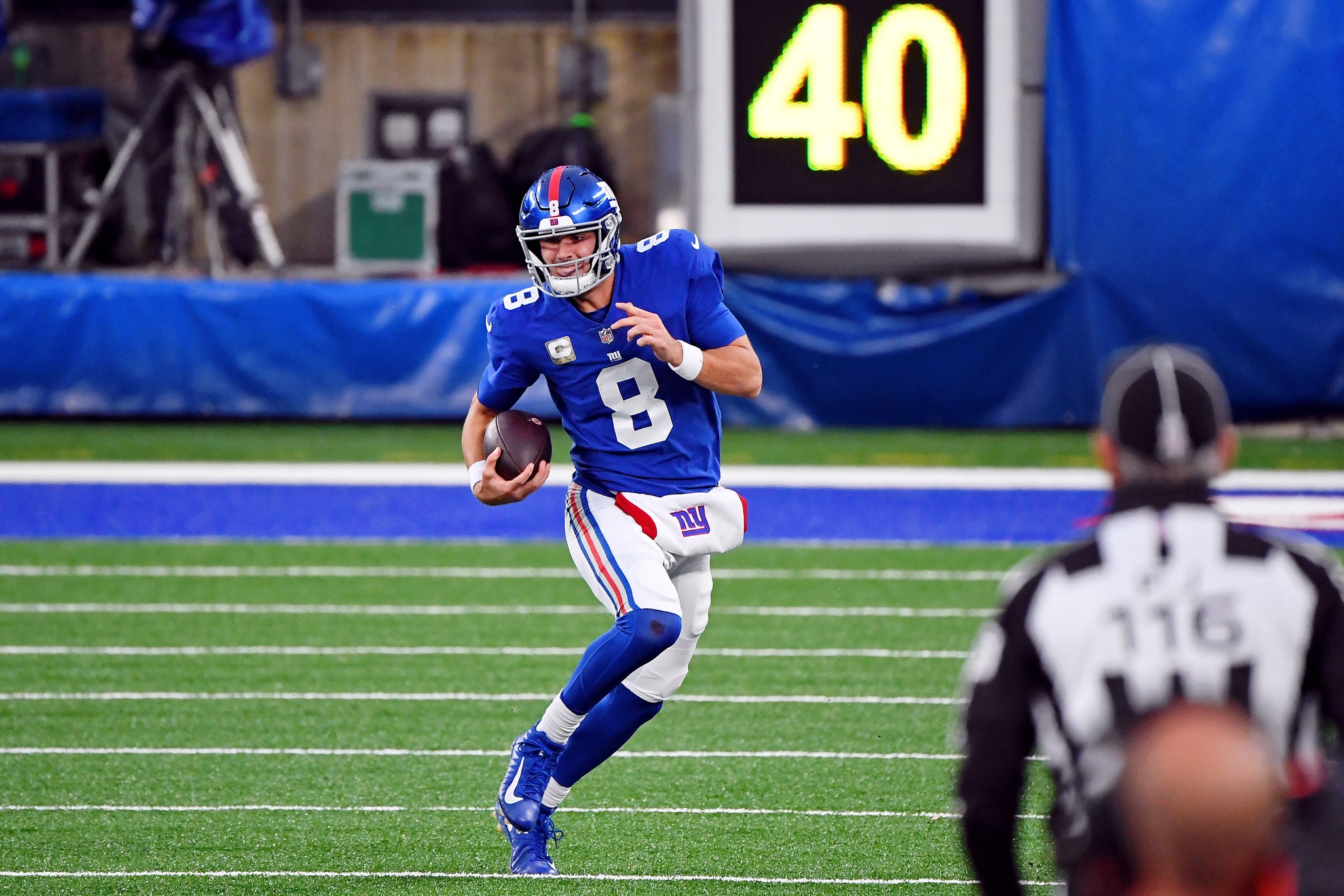
New York Giants: QB Daniel Jones
This one may seem like a mistake, given that many of Jones’ passing numbers actually took a step back in his second season, but those passing numbers don’t tell the entire story. Jones’ PFF grade — a number designed to isolate the play of a quarterback from his supporting cast — actually improved from 65.9 as a rookie to 78.4 in 2020.
The biggest reason for that improved grade was that Jones did a better job of keeping the ball out of harm’s way, reducing his number of turnover-worthy plays from 31 in 2019 to 17 this past season on a similar number of dropbacks. He also gave the Giants some added value with his athleticism as a runner. A better offensive environment should lead to better results for Jones next season.
New York Jets: DI Quinnen Williams
Considering the extent to which Williams dominated college football in his final season at Alabama, his rookie season in New York could very definitely be classified as a disappointment. Sometimes, it just takes a year or two for young players in the trenches to acclimate, though. That seems to have been the case for Williams.
He improved his PFF grade from 67.4 as a rookie in 2019 to 81.4 in 2020, the biggest jump coming from his impact as a pass-rusher. Williams more than doubled his pressure count from 2019, and his 16 combined quarterback hits and sacks came in at 10 more than his mark the prior season. Expect big things from the former first-round pick moving forward.
Philadelphia Eagles: WR Travis Fulgham
The Eagles' receiving corps needed somebody, anybody, to step up in the wake of poor performances and injuries early in the 2020 season. Fulgham answered that call.
Coming into the 2020 season without an NFL catch in his rookie 2019 campaign, Fulgham drew his first career start in Week 4 and proceeded to lead the NFL in receiving yards over the next five weeks. The rest of his season wasn’t nearly as impressive, as several other receiving options began to return from injury, but his performance on the year as a whole was still impressive given what everyone knew about the sixth-round pick from Old Dominion coming into the year.
Pittsburgh Steelers: S Terrell Edmunds
Many considered the selection of Edmunds in the first round of the 2018 NFL Draft to be a reach, and the fact that he could often be pointed out as the weak link — particularly in coverage — on an otherwise strong Pittsburgh defense didn’t help matters.
Not only did Edmunds deliver a career-high 71.2 PFF grade in 2020, but his play in coverage was the driving factor for his improvement. Edmunds improved his coverage grade from 58.3 in 2019 to 75.3 this past season while reducing his passer rating when targeted from 120.8 to 76.2. He doubled his combined pass breakups and interceptions (six in 2020 compared to three in 2019) as well. His continued development will be key if the Steelers hope to deliver another dominant defensive performance in 2021.
San Francisco 49ers: LB Fred Warner
Warner was clearly a good linebacker entering the 2020 season, but he might have come out of the 2020 season as the best linebacker in the NFL. Based purely on his position-high 88.6 PFF grade — a significant jump over 64.1 and 63.5 marks in his first two seasons — Warner was the best linebacker in the league this past season.
His instincts and feel in zone coverage paired with his athleticism play extremely well in coverage, where his 91.1 coverage grade led all linebackers. With linebackers coach Demeco Ryans earning a promotion to defensive coordinator to replace Robert Saleh, Warner’s momentum should carry over into 2021.
Seattle Seahawks: RT Brandon Shell
Shell was a well-below-average pass-protector in his three seasons with the Jets from 2017 to 2019. His 6.7% pressure rate allowed over that stretch ranked 38th out of the 54 tackles who recorded at least 1,000 pass-blocking snaps. However, that rate was over two percentage points lower this past season in Seattle (4.6%), ranking 23rd out of 66 tackles to pass protect at least 250 times in 2020. Along with that improvement as a pass-protector, Shell’s 63.4 run-blocking grade in 2020 was a career-high mark.
Unfortunately, Shell missed a large portion of the back half of the season with an injury. He still doesn’t profile anywhere close to a high-level starting tackle, but Shell took himself out of the “actively looking for an improvement” category at the position with his play this year.
Tampa Bay Buccaneers: S Jordan Whitehead
Whitehead had one of the biggest swings of any safety in the NFL in terms of PFF WAR from 2019 to 2020. His -0.28 wins above replacement in 2019 was the third-worst mark among any safety, but that has jumped all the way up to 0.50 this season — a top-20 mark at the position. He has been quick to trigger in the run game and a consistent presence there all season. He has also been a reliable contributor in coverage. Whitehead was an underappreciated part of a very good Tampa Bay defense in 2020.
Tennessee Titans: RG Nate Davis
The jump in competition from Charlotte to the NFL is a big one, and it’s one that Davis struggled with as a rookie in 2019 — his 46.6 PFF grade was one of the worst marks for a starting guard in the league.
Davis still had his struggles in pass protection with Tennessee in 2020, but his run blocking was significantly improved. His 73.8 run-blocking grade was over 20 points higher than his grade in 2019, and he was a key part of one of the best rushing attacks in the league and Derrick Henry’s 2,000-yard season on the ground.
Washington Football Team: EDGE Montez Sweat
You often see edge defenders take a year or two to really find their footing in the NFL. Sweat was a solid but unexceptional run defender without providing much as a pass-rusher as a rookie in 2019. He took big strides in both departments as part of a talented Washington defensive line in 2020.
Sweat’s 87.0 run-defense grade was third at the position behind only Khalil Mack and T.J. Watt, and he produced 20 combined sacks and hits as a pass-rusher with six batted passes mixed in. He and Chase Young project to be one of the league’s best edge defender duos for years to come.
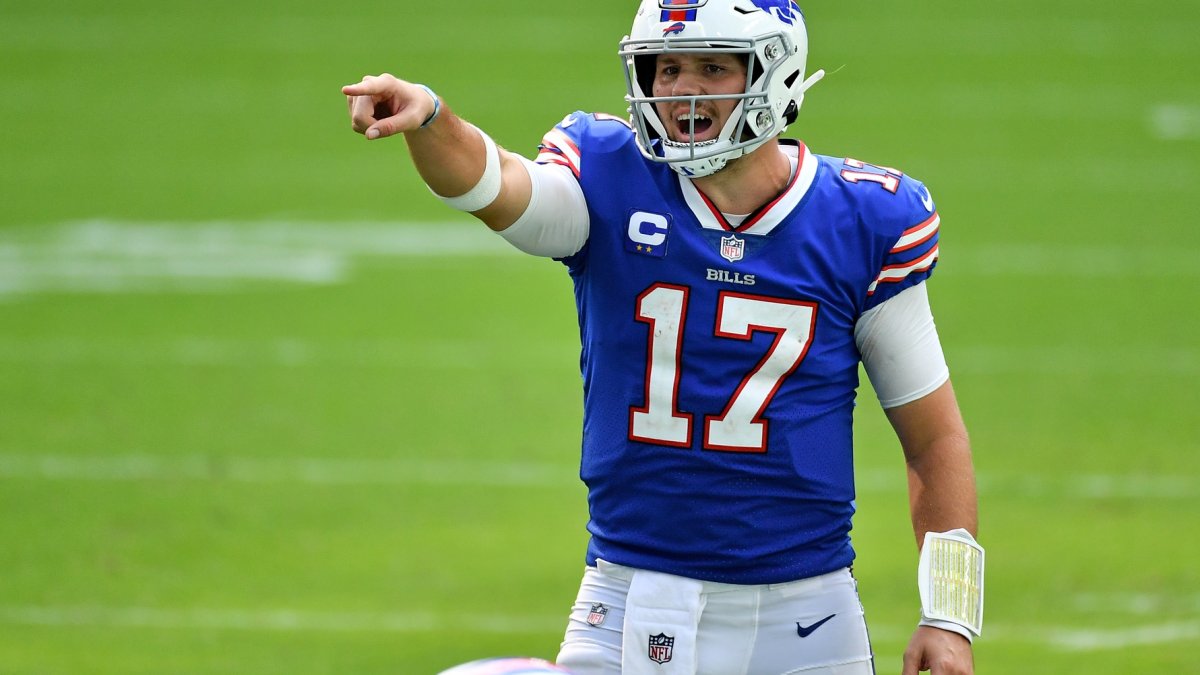


 © 2025 PFF - all rights reserved.
© 2025 PFF - all rights reserved.